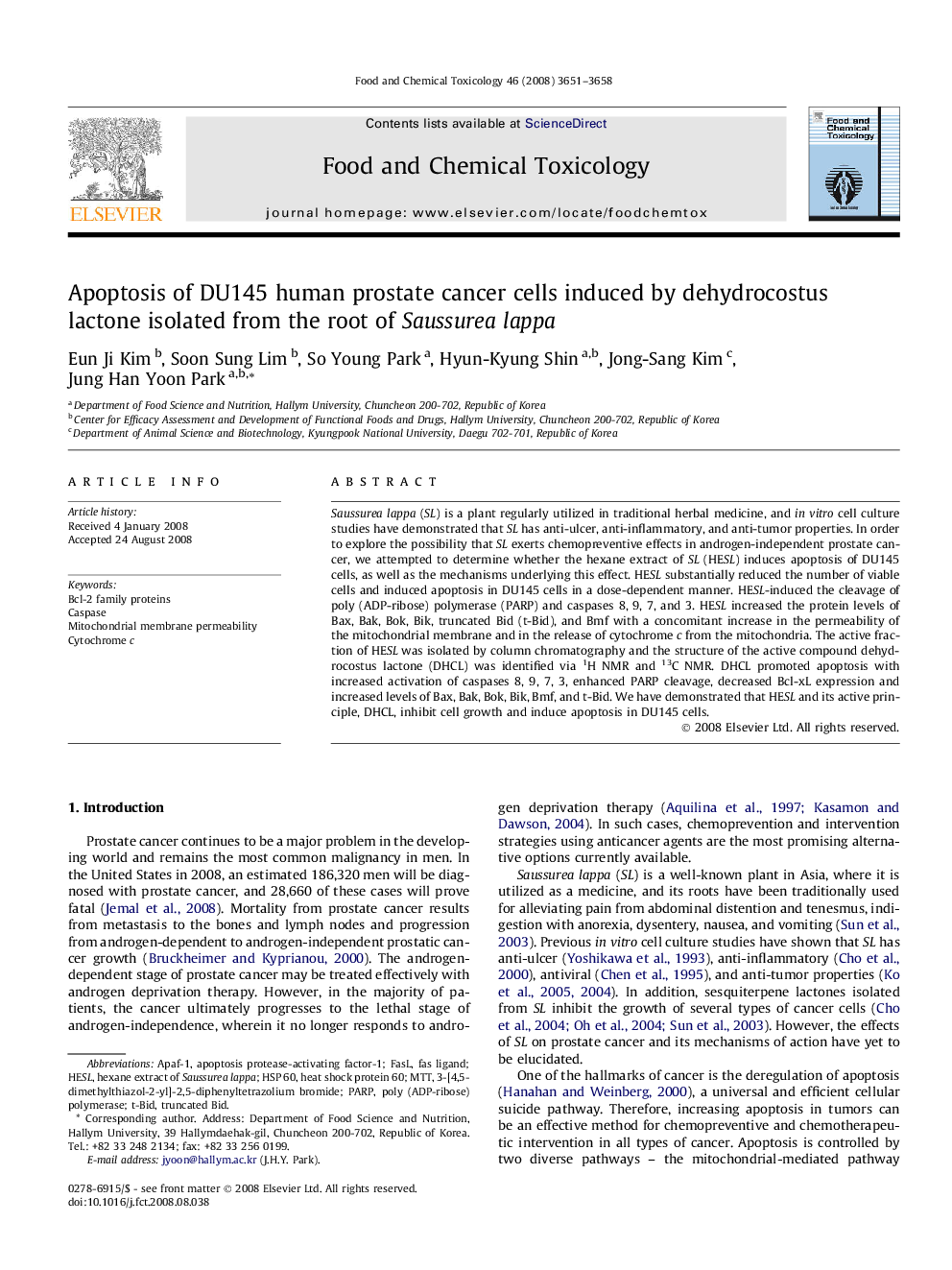| Article ID | Journal | Published Year | Pages | File Type |
|---|---|---|---|---|
| 2586312 | Food and Chemical Toxicology | 2008 | 8 Pages |
Saussurea lappa (SL) is a plant regularly utilized in traditional herbal medicine, and in vitro cell culture studies have demonstrated that SL has anti-ulcer, anti-inflammatory, and anti-tumor properties. In order to explore the possibility that SL exerts chemopreventive effects in androgen-independent prostate cancer, we attempted to determine whether the hexane extract of SL (HESL) induces apoptosis of DU145 cells, as well as the mechanisms underlying this effect. HESL substantially reduced the number of viable cells and induced apoptosis in DU145 cells in a dose-dependent manner. HESL-induced the cleavage of poly (ADP-ribose) polymerase (PARP) and caspases 8, 9, 7, and 3. HESL increased the protein levels of Bax, Bak, Bok, Bik, truncated Bid (t-Bid), and Bmf with a concomitant increase in the permeability of the mitochondrial membrane and in the release of cytochrome c from the mitochondria. The active fraction of HESL was isolated by column chromatography and the structure of the active compound dehydrocostus lactone (DHCL) was identified via 1H NMR and 13C NMR. DHCL promoted apoptosis with increased activation of caspases 8, 9, 7, 3, enhanced PARP cleavage, decreased Bcl-xL expression and increased levels of Bax, Bak, Bok, Bik, Bmf, and t-Bid. We have demonstrated that HESL and its active principle, DHCL, inhibit cell growth and induce apoptosis in DU145 cells.
